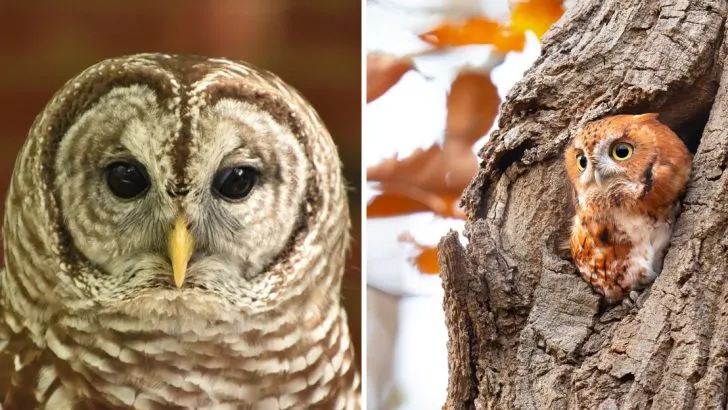Owls have long been associated with mystery and wisdom, but their fascinating behaviors and unique characteristics go far beyond what meets the eye. From their silent flight to their incredible vision, these nocturnal predators continue to amaze researchers and nature enthusiasts alike.
In this article, we delve into 12 mind-blowing facts about owls that reveal just how remarkable these mysterious creatures truly are. Get ready to discover the secrets behind their silent hunting methods, their specialized anatomy, and much more!
Exceptional Night Vision
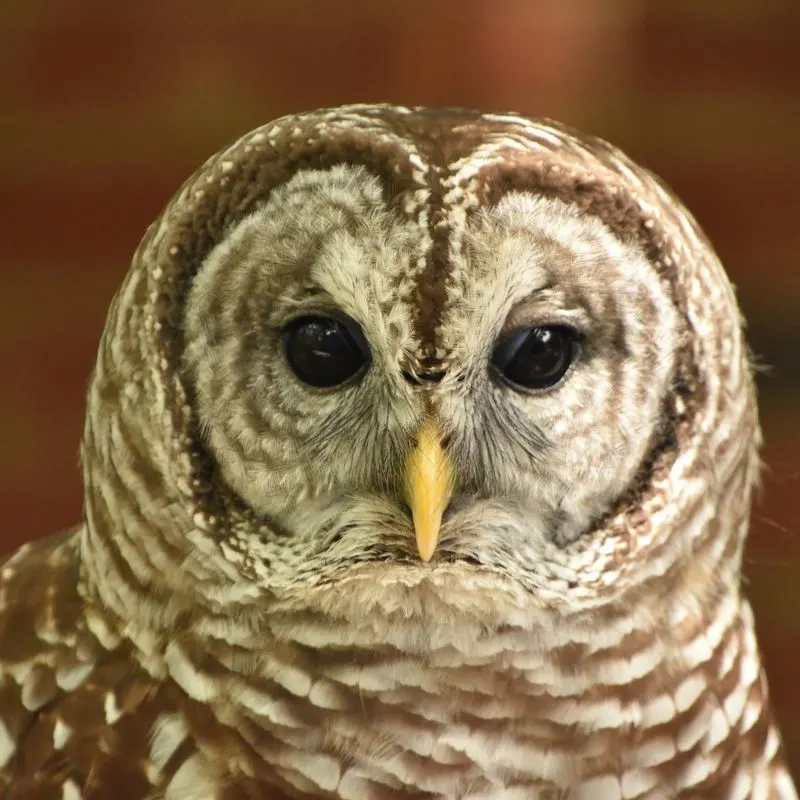
Owls have a unique adaptation that enables them to see in the dark. Their large eyes, equipped with numerous rod cells, allow them to capture the faintest light. This adaptation aids in hunting. Unlike humans, owls can’t move their eyes. Instead, they rotate their heads, giving them a nearly 360-degree view. This extraordinary ability makes them efficient nocturnal predators. The next time you hear an owl hoot at night, remember its eyes are scanning the surroundings. This nocturnal vision is a survival tool. It highlights nature’s ingenuity in the animal kingdom’s relentless pursuit of adaptation.
Silent Flight
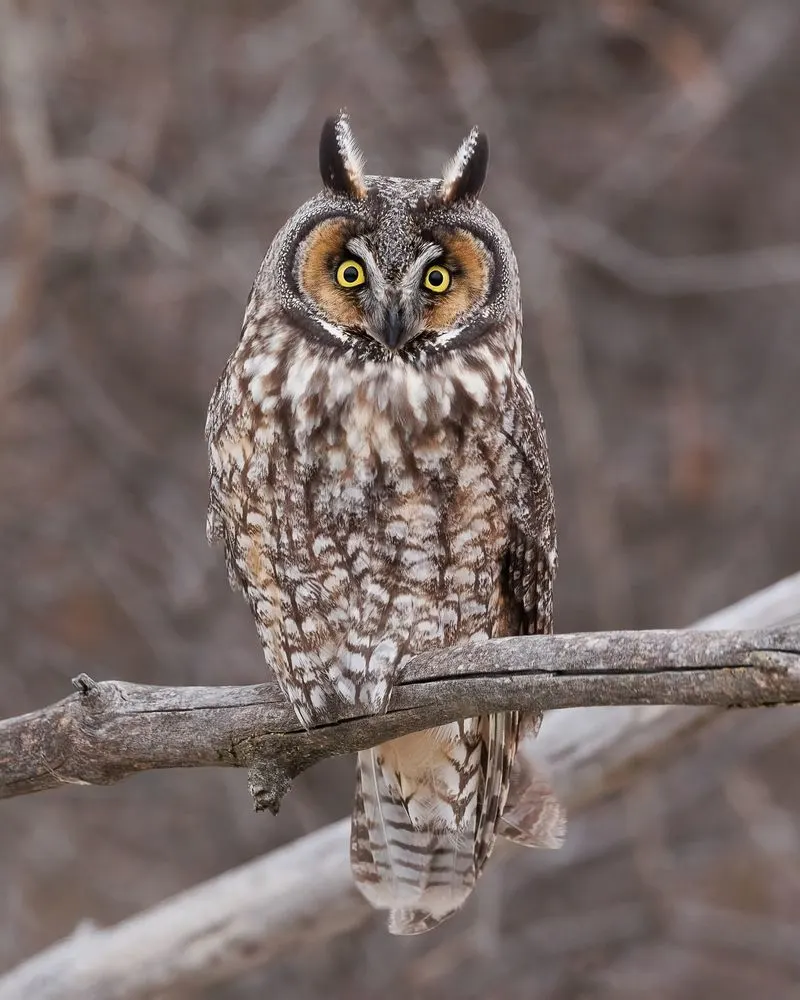
The ability to fly silently is a remarkable feature of owls. Their feathers have specialized edges that muffle sound, allowing them to approach prey without detection. This silent flight is crucial for hunting success. Unlike other birds, owls can glide nearly soundlessly through the air. This adaptation is not just for stealth; it also enables them to hear prey movements better. The combination of silent wings and acute hearing makes them one of nature’s most efficient hunters. It’s a testament to their evolutionary prowess and the subtle complexities of their design.
Vivid Facial Disc

Owls are equipped with a distinct facial structure, known as the facial disc. This feature functions like a satellite dish, capturing sound and directing it to their ears. The shape and size of the disc can vary among species, aiding in sound localization. This adaptation enhances their hunting efficiency. By funneling sound directly to their ears, owls can pinpoint the exact location of their prey, even in complete darkness. The facial disc is not just for aesthetics. It’s a crucial part of their sensory arsenal, demonstrating the owl’s specialized adaptations.
Varied Vocalizations
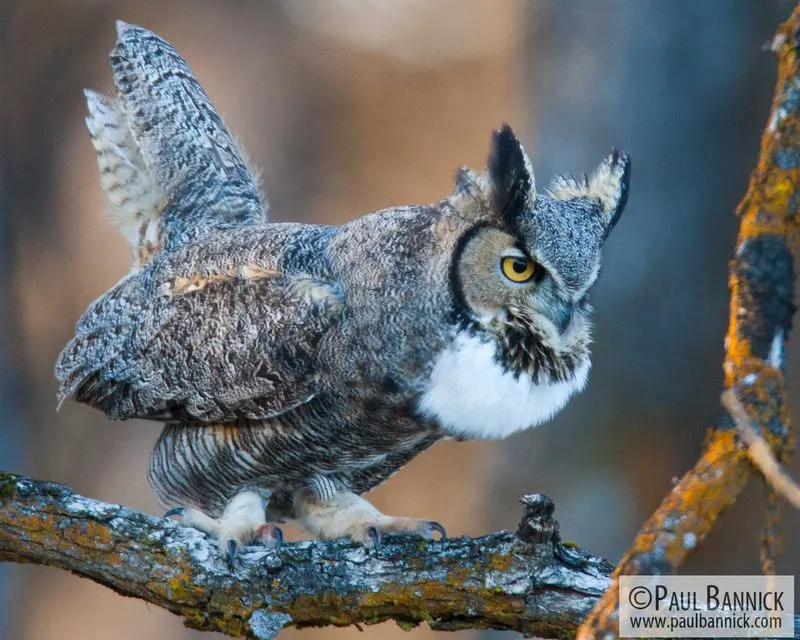
Owls communicate using a range of sounds, from hoots to screeches. Each species has its own set of vocalizations, often used for mating calls or territorial alerts. These sounds are essential for survival and interaction within their habitat. The diversity in owl calls is fascinating. It’s not just about communication; it’s about establishing identity and dominance. Each call carries unique information, decipherable only to those within the same species. This vocal variety is a testament to the complexity of their social interactions. It showcases the intricate communication systems in the wild.
Unique Diet
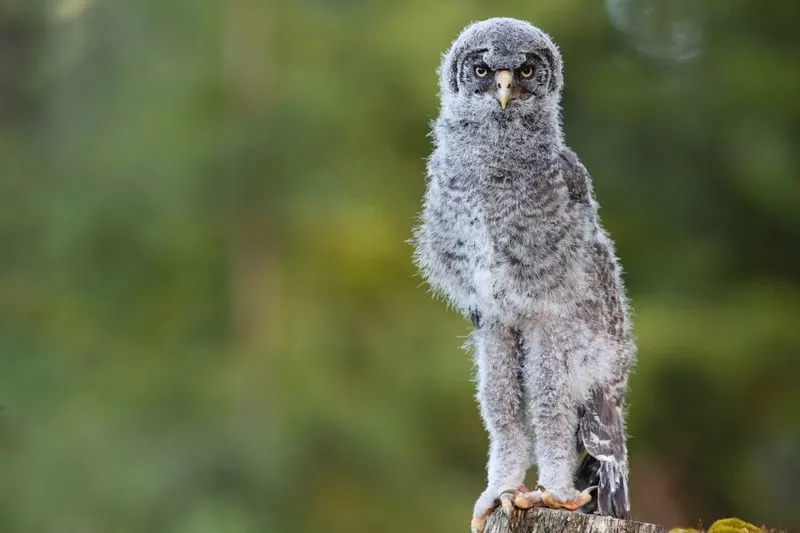
Owls have a diverse diet, consuming everything from insects to mammals. Their feeding habits are dictated by their environment and species. This dietary flexibility ensures survival across various habitats. Unlike many predators, they swallow prey whole. This behavior aids in efficient digestion, as they later regurgitate indigestible parts. This adaptation not only reflects their opportunistic nature but also their ability to thrive in diverse ecosystems. By consuming a wide range of prey, they play a critical role in maintaining ecological balance. Their diet is a key aspect of their adaptability and survival.
360-Degree Head Rotation
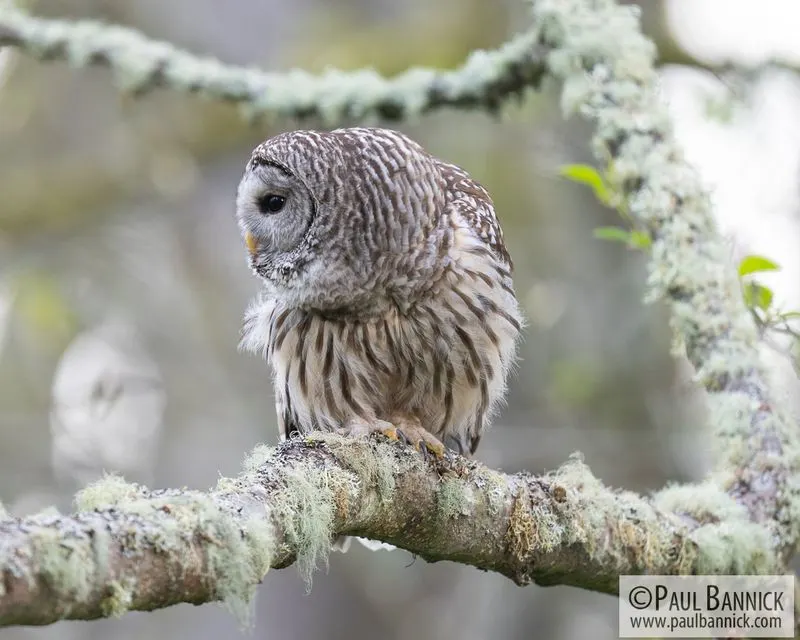
While owls can’t move their eyes, they compensate with impressive neck flexibility. An owl can rotate its head about 270 degrees. This ability allows them to have an extensive field of view. The secret lies in their unique skeletal and vascular adaptations. This head-turning capability is crucial for hunting and environmental awareness. It’s an adaptation that sets them apart from other birds. This feature not only aids in predation but also allows them to avoid predators. It’s a fascinating blend of biological engineering and evolutionary success, showcasing nature’s problem-solving prowess.
Diverse Species Distribution
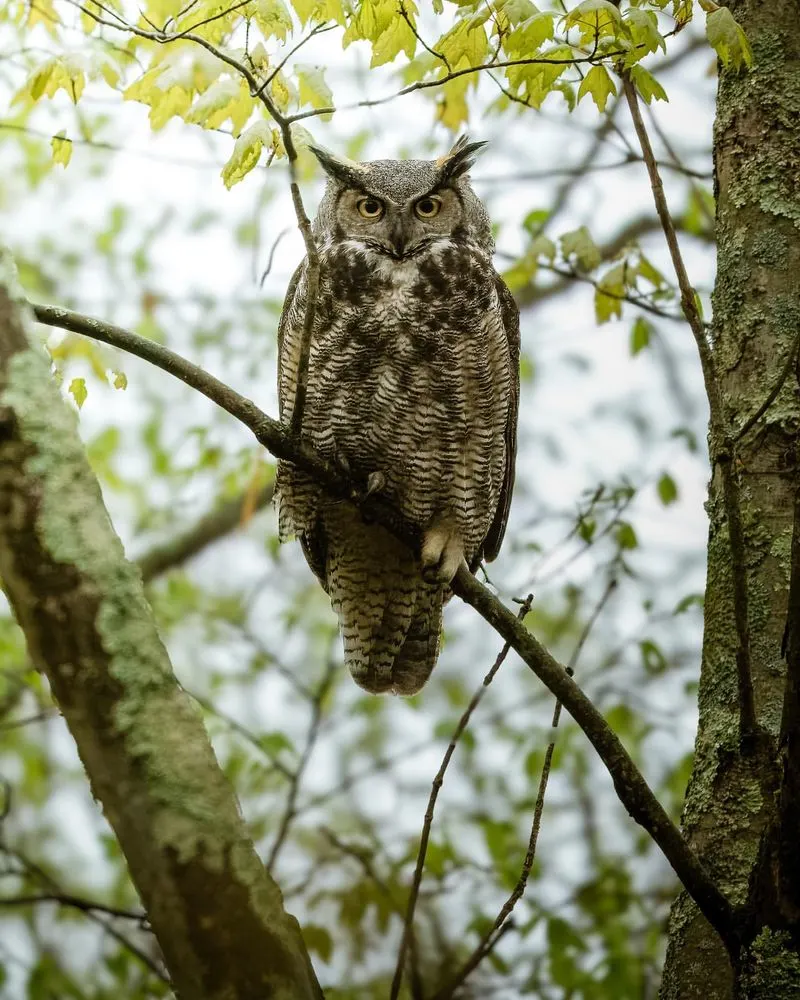
Owls are found on every continent except Antarctica. Their adaptability to various climates makes them one of the most widespread bird species. From tropical rainforests to arid deserts, owls have found ways to thrive. This wide distribution speaks to their evolutionary success. Each species has adapted to its specific environment, showcasing incredible diversity. This adaptability ensures their survival despite environmental challenges. It’s a testament to their resilience and ability to conquer diverse landscapes. The global presence of owls highlights their ecological significance and widespread appeal.
Mysterious Symbolism
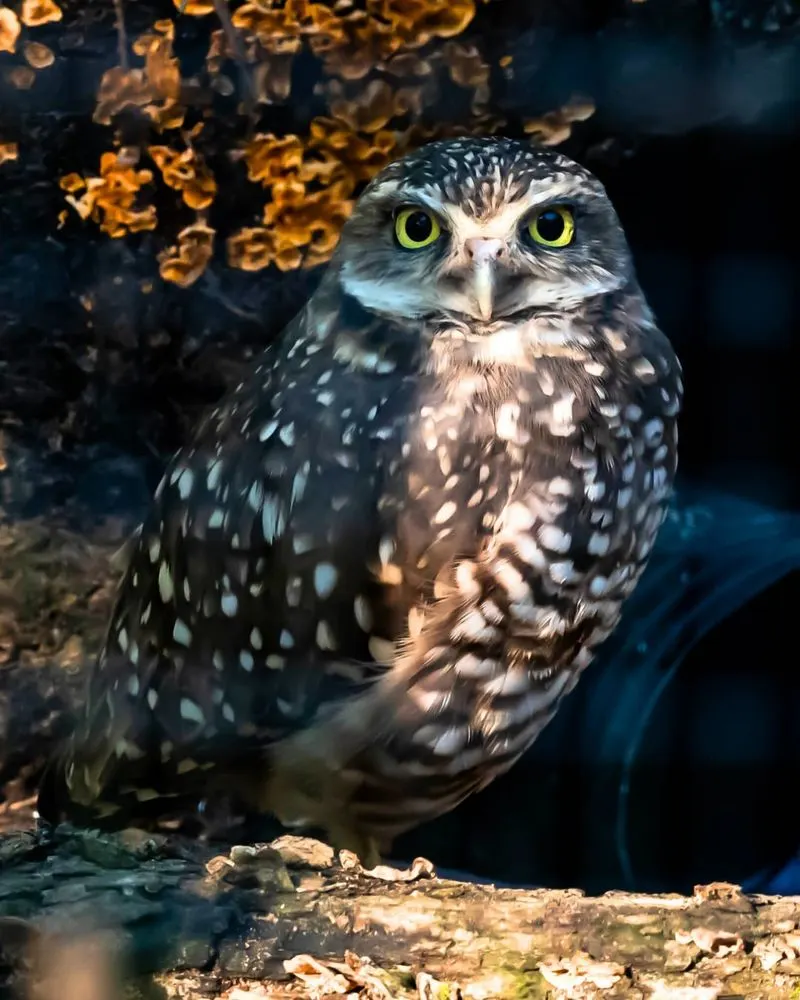
Throughout history, owls have been symbols of wisdom and mystery. In ancient Greece, they were associated with Athena, the goddess of wisdom. This symbolism transcends cultures and time. Owls are often seen in folklore as omens or guardians. Their nocturnal nature and haunting calls add to their mystique. In some cultures, they symbolize death or change, while in others, they represent protection and insight. This duality in symbolism adds to their allure. Owls remain enigmatic creatures, weaving through the tapestry of human culture and mythology with grace and intrigue.
Efficient Hunters
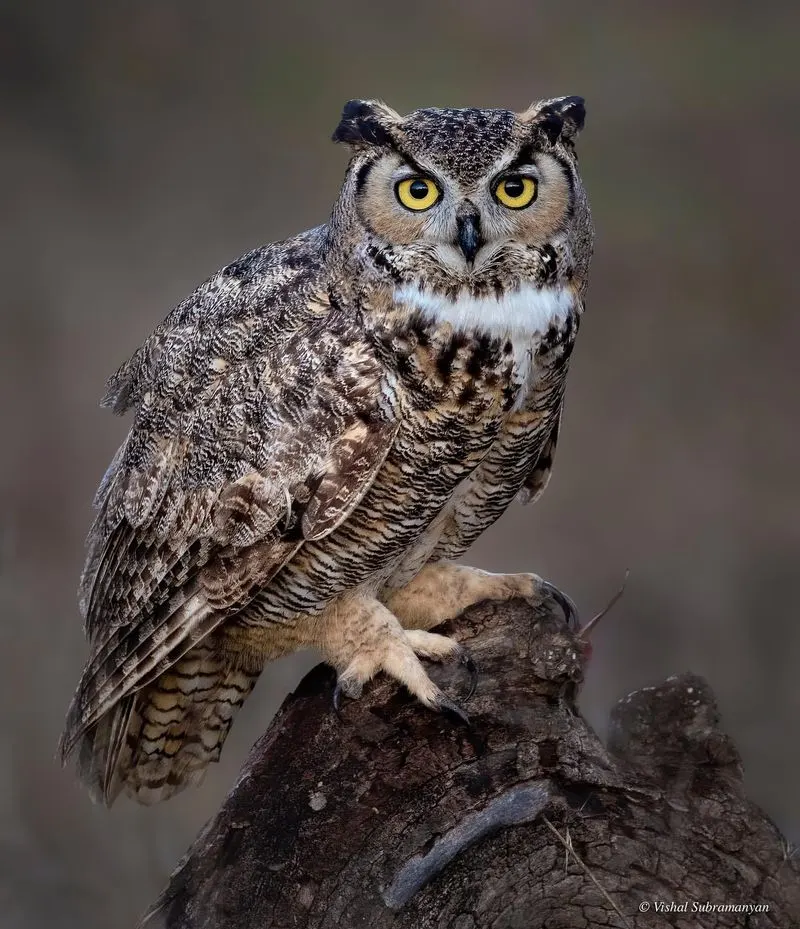
Owls are among the most efficient predators in the avian world. Their combination of silent flight, sharp talons, and acute senses makes them formidable hunters. This efficiency is a result of millions of years of evolution. Their hunting strategy involves stealth and precision, often capturing prey by surprise. This capability ensures their survival in various ecosystems. By controlling rodent populations, they play an essential role in maintaining ecological balance. Their hunting prowess is not just a survival mechanism. It’s a finely tuned aspect of their biology, reflecting evolutionary mastery.
Unique Nesting Habits
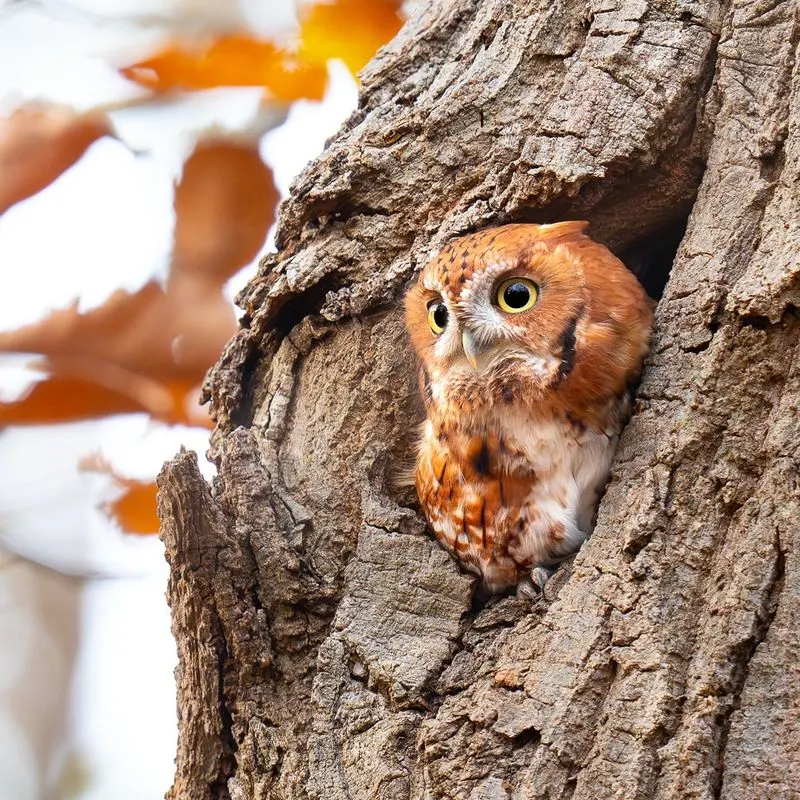
Unlike many birds, owls do not build traditional nests. They often use tree cavities or abandoned nests by other birds. This nesting behavior is about conservation of energy and resources. It’s a strategic choice that ensures protection and comfort for their young. The choice of nesting sites varies by species, reflecting adaptability. This approach to nesting highlights their opportunistic nature. By utilizing existing structures, they minimize effort while maximizing safety. These unique habits are a testament to their resourcefulness and adaptability. It’s a clever strategy in the challenging world of survival.
Complex Molting Process
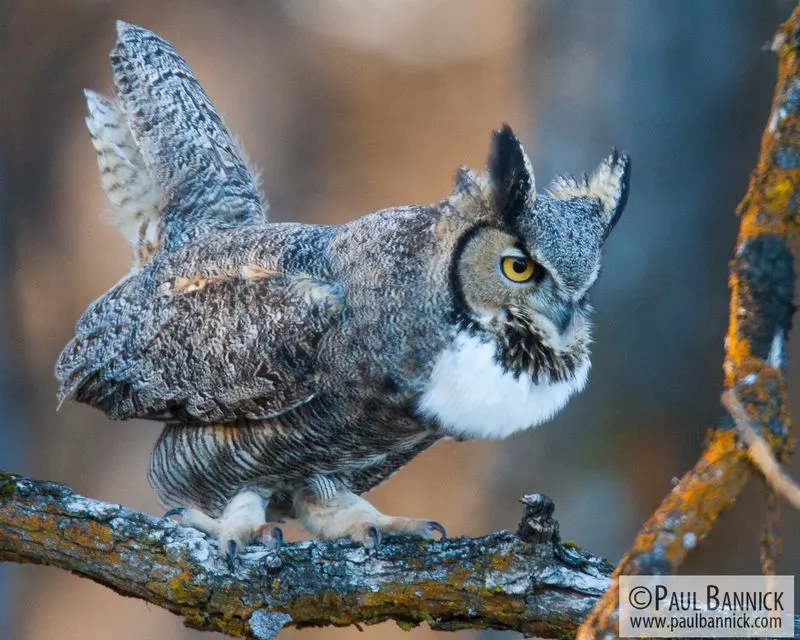
Owls undergo a molting process that replaces old feathers with new ones. This process is vital for maintaining their flight efficiency. Molting occurs gradually to ensure they retain the ability to fly. It reflects the delicate balance between regeneration and survival. During this time, owls might become less active. This temporary change in behavior is a survival strategy. By conserving energy, they focus on renewing their feathers. The molting process is a fascinating aspect of their biology. It ensures they remain agile and efficient hunters, ready to face the challenges of their environment.
Intricate Camouflage
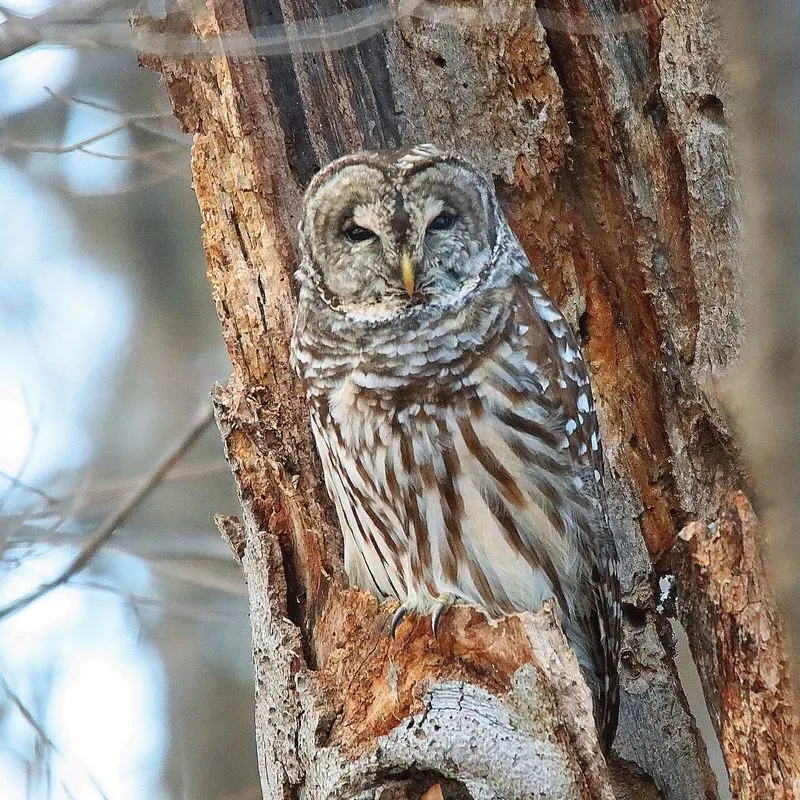
Owls have evolved intricate camouflage to blend into their surroundings. Their feather patterns mimic the textures and colors of their habitats, providing excellent concealment. This natural disguise is crucial for avoiding predators and sneaking up on prey. Camouflage is a survival tool. It allows owls to remain unnoticed, enhancing their hunting success. This adaptation is a perfect example of evolution at work. By being invisible in plain sight, they maintain an edge in the wild. It’s a skill that underscores their role as stealthy nocturnal predators, forever adapting to stay one step ahead.

